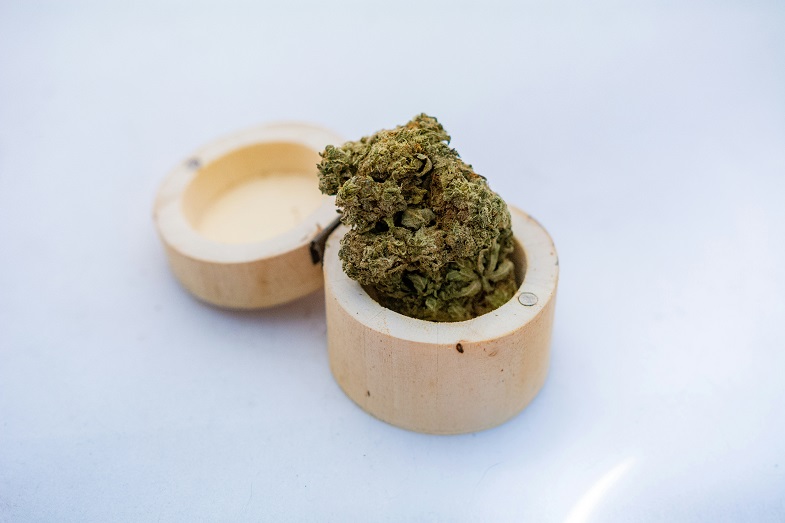Published on: 26/07/2024
Cannabis is a multifaceted plant known for its medicinal, recreational, and industrial properties
This article will explore the distinctive characteristics of each variety and analyze the peculiarities that make them unique. Understanding these differences is essential for those who wish to cultivate cannabis or cannabis seeds for personal or commercial use, as well as for those who want to deepen their knowledge of this fascinating plant.
Cannabis Sativa: The Most Well-Known Variety
Cannabis Sativa is perhaps the most well-known and widely used variety. Originating from equatorial regions such as Southeast Asia, Central America, and parts of Africa, Sativa is distinguished by its tall and slender growth. The plants can reach considerable heights, often exceeding three meters under ideal conditions.
One of the most fascinating aspects of Sativa is its chemical profile. This variety tends to contain high levels of THC (tetrahydrocannabinol), the main psychoactive compound in cannabis, and low levels of CBD (cannabidiol). This chemical combination makes Sativa particularly appreciated for its stimulating effects. Users often report increased creativity and concentration, making it popular for daytime use when mental stimulation can be most beneficial.
In terms of cultivation, Sativa requires a warm and sunny climate to thrive. Its flowering cycle is longer than other varieties, generally between 10 and 16 weeks. This prolonged cycle can be challenging for growers, but the results can be extremely rewarding, with abundant yields of resinous and fragrant buds.
Read also: An overview of the close relationship between cannabis and music


Cannabis Indica: Distinctive Characteristics
Cannabis Indica originates from the mountainous regions of Central Asia, such as India, Afghanistan, and Pakistan. Its plants are short and robust, with broad leaves. This morphological adaptation is likely a response to the harsh climatic conditions of their native lands.
One of the main differences between Indica and Sativa lies in their effect on the human body. Indica is renowned for its relaxing and sedative effects. The high levels of CBD in Indica contribute to these calming effects, making this variety particularly useful for treating insomnia, chronic pain, and anxiety.
Cultivating Cannabis Indica presents some differences compared to Sativa. Indica has a shorter flowering cycle, ranging from 6 to 9 weeks, making it an attractive choice for growers who desire a quicker production. Additionally, Indica plants are more resilient and adaptable to a variety of climatic conditions, making them a versatile choice for both indoor and outdoor cultivation.
Cannabis Ruderalis: A Different Variety
Less known than its cousins Sativa and Indica, Cannabis Ruderalis is a unique variety that deserves attention. Originating from the colder and more inhospitable regions of Eastern Europe and Central Russia, Ruderalis has developed characteristics that distinctly set it apart from other cannabis varieties.
Its most distinctive feature is its ability to flower automatically through its autoflowering seeds. Unlike Sativa and Indica, which depend on the light cycle to enter the flowering phase, Ruderalis flowers automatically after a vegetative growth period of 3-4 weeks. This feature, known as “autoflowering,” makes it extremely useful for growers operating in climates with shorter growing seasons.
In terms of size, Ruderalis is a small and compact plant, rarely exceeding half a meter in height. This reduced growth is an adaptation to the harsh environmental conditions of its native regions. However, this does not mean that Ruderalis is less valuable. On the contrary, it is often crossed with other cannabis varieties to create autoflowering hybrids that combine the resilience of Ruderalis with the desirable properties of Sativa and Indica.
Hybrids: The Best of Both Worlds
In recent decades, cannabis cultivation has seen a significant increase in the creation of hybrids. These hybrids result from crossing Sativa, Indica, and Ruderalis varieties with the goal of combining the best characteristics of each.
For example, a Sativa-Indica hybrid can offer a unique combination of effects, balancing the stimulating energy of Sativa with the physical relaxation of Indica. Similarly, autoflowering hybrids that include Ruderalis are particularly appreciated for their ease of cultivation and rapid growth cycle.
Hybrids are extremely variable, with a wide range of chemical profiles and effects. This diversity offers growers and users a plethora of options to find the variety that best suits their specific needs. Whether managing medical conditions, enhancing creativity, or simply relaxing, there is a perfect hybrid for every situation.
Cannabis and Medicine: Potentials and Applications
Cannabis has been used for medicinal purposes for millennia, and modern scientific research continues to discover new therapeutic use for this plant. The differences between Sativa, Indica, and Ruderalis are also reflected in their medicinal uses, with each variety offering unique benefits.
Sativa, with its energizing effects, is often used to treat depression and chronic fatigue. Its ability to stimulate appetite and improve mood also makes it useful for patients suffering from conditions involving weight loss and depression.


Indica, on the other hand, is highly effective in treating chronic pain, insomnia, and anxiety. Its relaxing and sedative effects help patients find relief from physical and mental symptoms, improving sleep quality and reducing stress.
Ruderalis, while less directly used for medicinal purposes, is valuable for creating hybrids that can be grown quickly and easily, providing broader access to therapeutic cannabis varieties.
Final Considerations on Choosing Cannabis Seeds
Choosing cannabis seeds is a crucial decision for any grower. Understanding the differences between Sativa, Indica, and Ruderalis can help make informed decisions that align with cultivation goals and personal needs.
When selecting among these varieties, it is important to consider factors such as local climate, available growing space, and the grower’s experience. Personal preferences in terms of desired effects also play a significant role. A grower seeking a tall and productive plant with stimulating effects might opt for a Sativa, while someone wanting fast and resilient growth might prefer an autoflowering hybrid with Ruderalis genetics.
Read also: Medical cannabis: a possible remedy for migraines?
Conclusion
The varieties of Sativa, Indica, and Ruderalis offer a wide range of characteristics and benefits, making them suitable for a variety of uses and preferences. Whether cultivated for medicinal, recreational, or industrial purposes, understanding these differences is key to maximizing the potential of cannabis.
With the right information and a careful approach, anyone can find the perfect cannabis variety for their needs, and at SensorySeeds, we have something for everyone!









